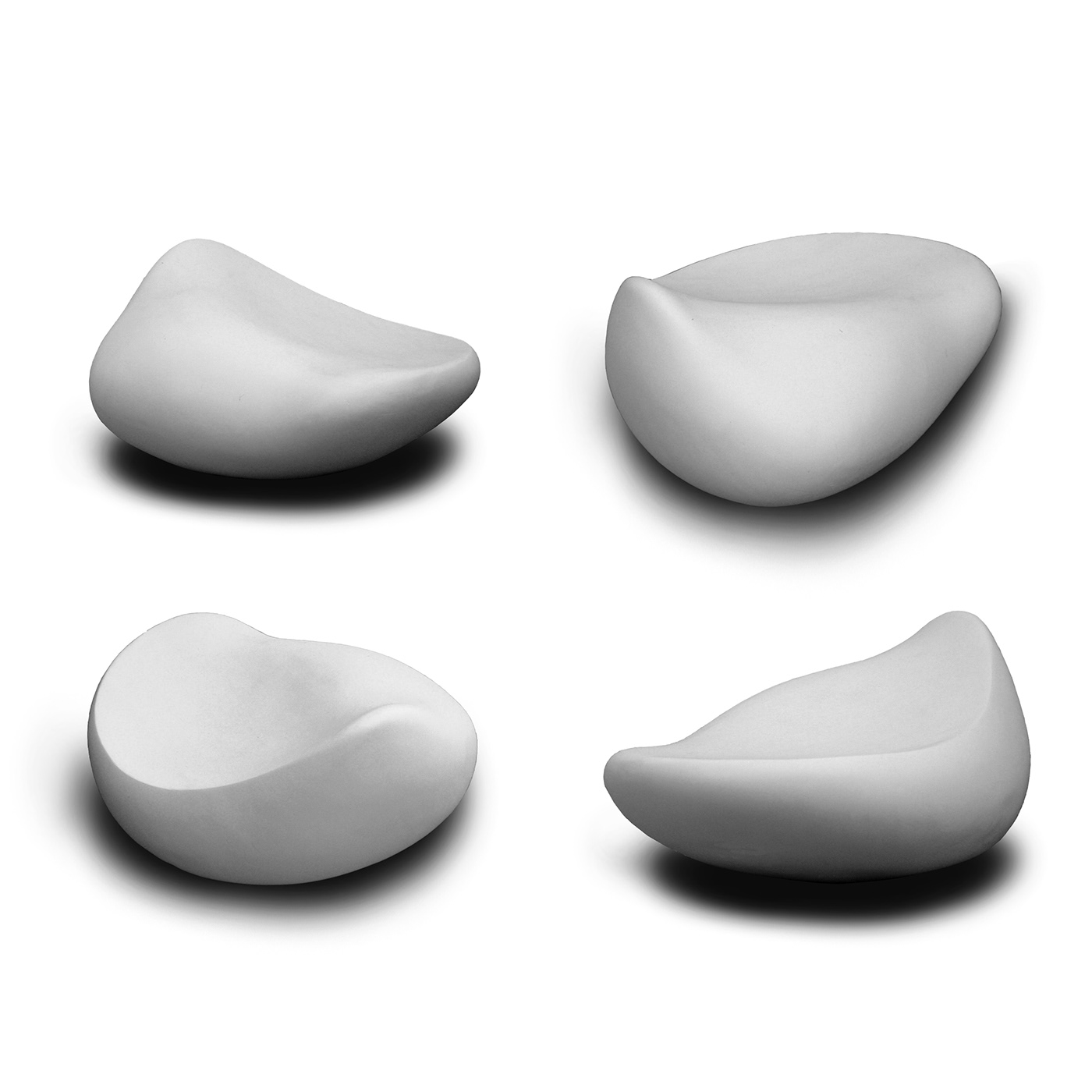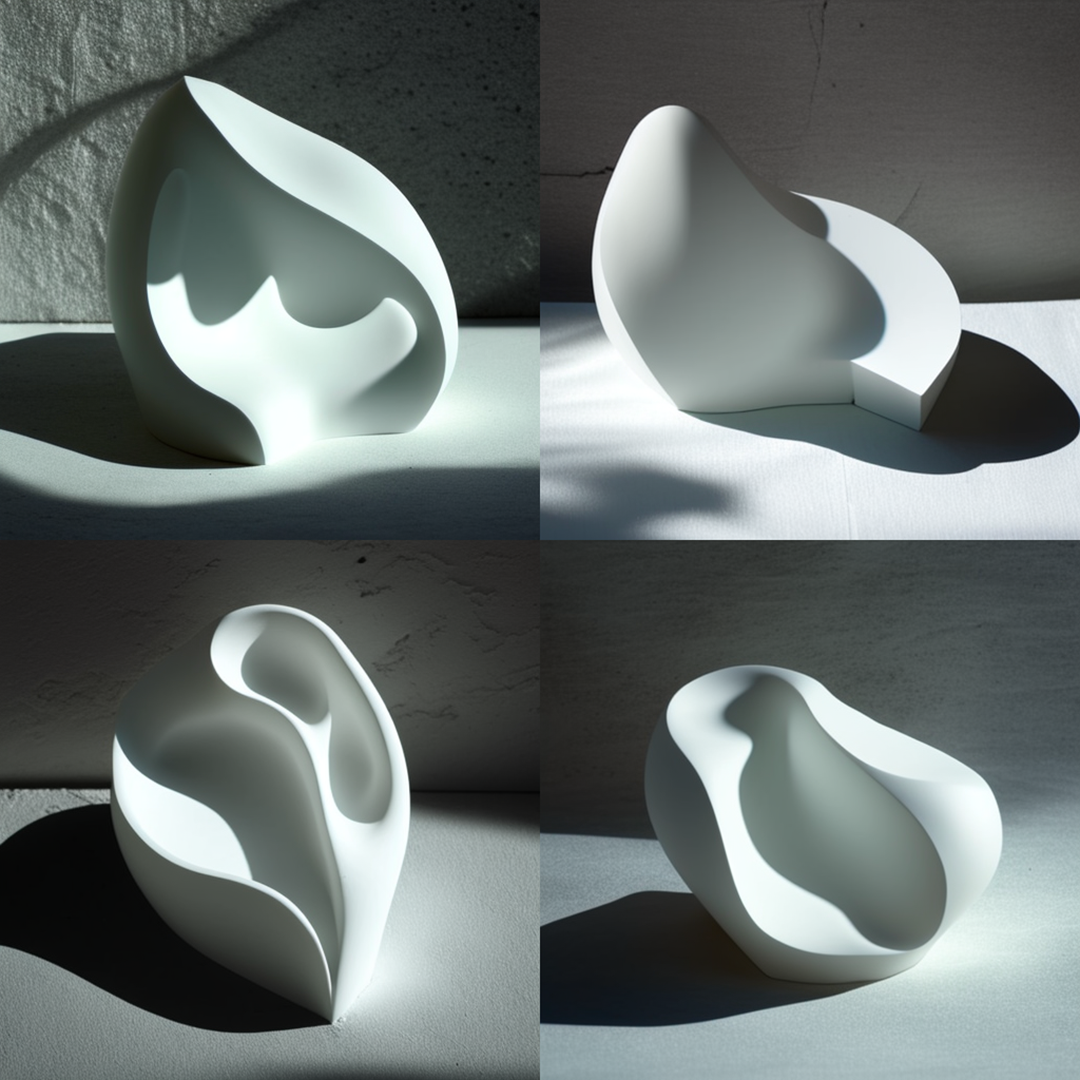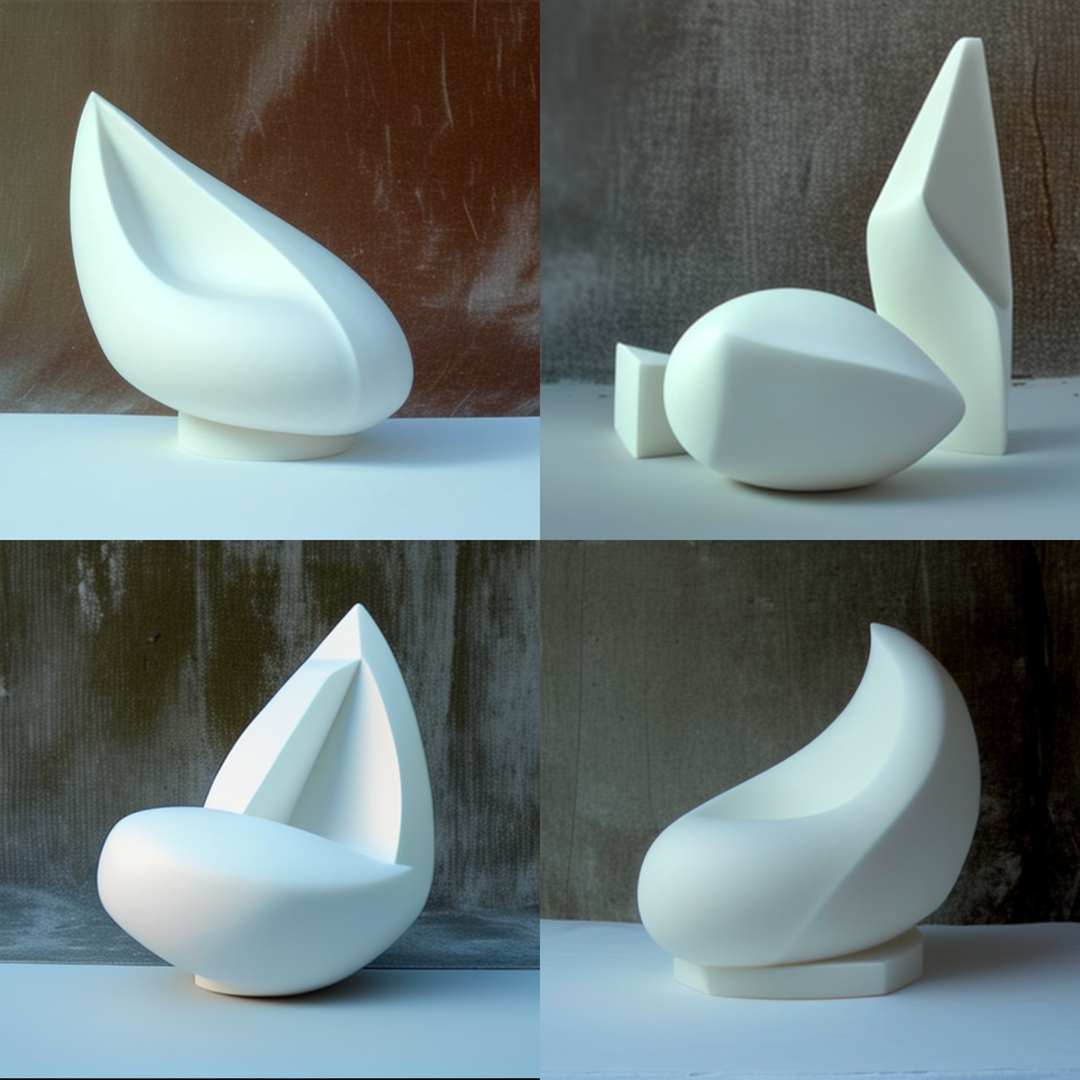
The Convexity problem, an exercise in organic form. Unlike some of the other 3-Dimensional design problems, which are compositions of elements, this one is a single form usually with no negative space involved. It is more about the subtle gesture of rounded volumes and slowly developing the surface over the course of the semester. This piece is over 20 years old, from when I was an industrial design student at Pratt Institute. Taking the first 3D class taught by Linda Celentano after the great Bill Fogler left us. I was extremely lucky to have Bill Fogler’s last class and Linda Celentano’s first class.

This assignment was lovingly referred to as Schmoo. This was after the Lil’Abner character. This rather phallic little fellow was a larger (dominant) volume with a smaller (sub-dominant) volume gesturing upward. The schmoo-like forms in class were more vertical. At the time, this was the most common style of Convexity being produced by the students in the class. I think Linda choose a more horizontal form for me (from all of my clay sketches), perhaps because she wanted to see something different. Unfortunately, I do not have any images of my original clay sketches or the process of making this piece. Next time I will document the process more thoroughly, I promise!

These are the original 4 pictures I took of my convexity. A rather unfortunate choice of background. I am hoping to rectify that now.

To start off with, let’s see how this looks against a clean white background. The original picture had a lot of blue and teal tones, so I took the saturation way down.

Next, let's add some colorful backgrounds to see how the piece will look. Using the Hue/Saturation tool to adjust the blue/teal tones to match more with the backgrounds.

To see this piece in an actual environment where sculpture lives would be nice as well. Here is a super fast photo-shopped image of the convexity in a loft space.

Now, I would like to take the piece further and push the design of it. Using Midjourney, I uploaded some images of the convexity and added some prompts. The results were interesting, and some of the forms came out fairly dynamic.




